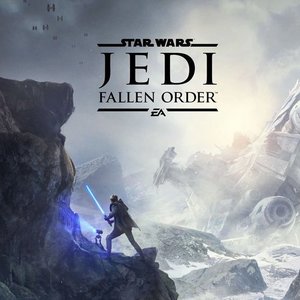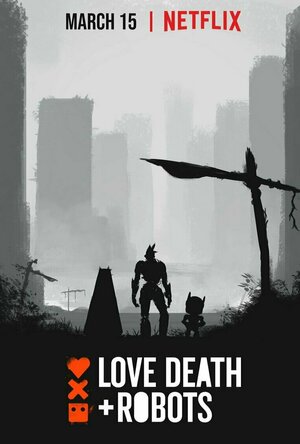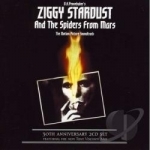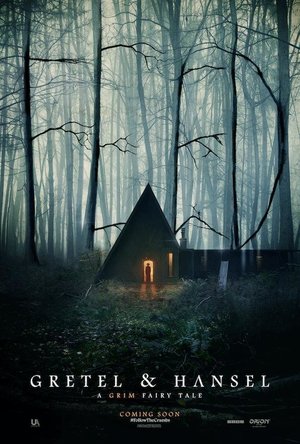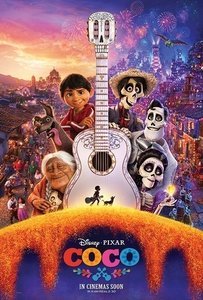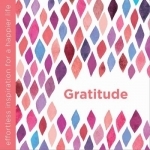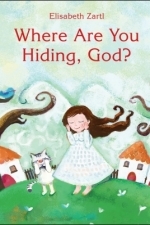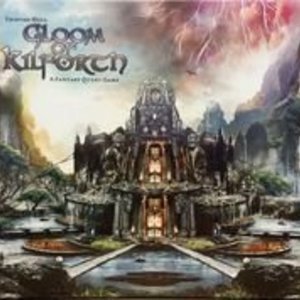Search
Search results
LeftSideCut (3776 KP) rated the PlayStation 4 version of Star Wars Jedi: Fallen Order in Video Games
Apr 7, 2020
I don't have much negativity to direct at Star Wars Jedi: Fallen Order, it's a pretty solid single player adventure that expands on Star Wars lore to a competent degree, and had me absorbed for the most part.
For a start, the game looks amazing. The settings are full of colour one second, and then harsh and cold the next, as you traverse forest planets like Kashyyyk, before navigating through Empire facilities.
The game is set between Episodes 3 and 4 of the movie canon, and borrows asthethic elements from both the original and prequel trilogies. It's interesting to be in the middle of a universe that has recently seen the destruction of the Jedi Order.
The gameplay is also great. The exploration and parkour elements are reminiscent of the Uncharted series, but adds enough Force stuff to make it not feel stale, and the combat is thrilling. JFO is genuinely challenging at times, especially during boss battles. You have to approach each encounter with patience and some sort of plan, or you'll find yourself struggling. It's not to dissimilar from Dark Souls in that respect.
By the time I had finished the campaign, and went through areas again in my pursuit of Platinum, I had unlocked all skills, and combat became easier, at times, really giving you the feel of a Jedi Knight.
You can also build and edit your own lightsaber, which is a nice touch.
The story is ok, largely about finding a McGuffin to help restore the Jedi, but this is one of those games that is all about the journey. The characters you meet along the way are all fleshed out to an acceptable degree, and BD-1, your droid companion for the campaign, is endearing and feels essential to the way the story pans out.
My main criticism is that it didn't have a huge amount of replay value once I was done. After finishing the campaign, it didn't take a massive amount of time to mop up everything else, and that was that, but it's forgivable considering how tight and polished the rest of the game feels.
Star Wars Jedi: Fallen Order is another shining example of how important single player games are in an age where multiplayer games reign supreme. Go and play it.
For a start, the game looks amazing. The settings are full of colour one second, and then harsh and cold the next, as you traverse forest planets like Kashyyyk, before navigating through Empire facilities.
The game is set between Episodes 3 and 4 of the movie canon, and borrows asthethic elements from both the original and prequel trilogies. It's interesting to be in the middle of a universe that has recently seen the destruction of the Jedi Order.
The gameplay is also great. The exploration and parkour elements are reminiscent of the Uncharted series, but adds enough Force stuff to make it not feel stale, and the combat is thrilling. JFO is genuinely challenging at times, especially during boss battles. You have to approach each encounter with patience and some sort of plan, or you'll find yourself struggling. It's not to dissimilar from Dark Souls in that respect.
By the time I had finished the campaign, and went through areas again in my pursuit of Platinum, I had unlocked all skills, and combat became easier, at times, really giving you the feel of a Jedi Knight.
You can also build and edit your own lightsaber, which is a nice touch.
The story is ok, largely about finding a McGuffin to help restore the Jedi, but this is one of those games that is all about the journey. The characters you meet along the way are all fleshed out to an acceptable degree, and BD-1, your droid companion for the campaign, is endearing and feels essential to the way the story pans out.
My main criticism is that it didn't have a huge amount of replay value once I was done. After finishing the campaign, it didn't take a massive amount of time to mop up everything else, and that was that, but it's forgivable considering how tight and polished the rest of the game feels.
Star Wars Jedi: Fallen Order is another shining example of how important single player games are in an age where multiplayer games reign supreme. Go and play it.
LeftSideCut (3776 KP) rated Love, Death & Robots - Season 1 in TV
Apr 9, 2020
The beauty of Love, Death and Robots is it's format. An eclectic collection of animated short films, some genuinely brilliant, with a handful of duds, truly gives something for everyone.
There are 18 films on show here, all with something different to offer.
Firstly there were 3 that failed to really resonate with me - Sucker of Souls, When the Yoghurt Took Over, and Alternate Histories. I found these three either slightly boring, or silly for the sake of being silly. There were 2 that sort of floated in the middle - The Dump, and Blind Spot, not bad by any means (none of the shorts are truly bad) but just were sort of there.
Leaving a grand total of 13 shorts that I thought were really really great.
A handful of these realistic CGI entries - namely, Sonnie's Edge, Three Robots, Beyond the Aquila Rift, Shape Shifters (one of the highlights for me), Helping Hand (reminded me of Gravity, in a great way), Lucky 13, and The Secret War.
These lot are lengthier offerings, and boast some good looking CGI animation, bordering on photo realism at times. The run time gives an opportunity for some decent fleshed out stories.
The Secret War in particular is nothing short of breath taking, and may well be my top pick of the whole season.
Elsewhere, we have more cartoony offerings - Suits, a loud animation that features farmers in mech suits fighting aliens. Zima Blue, a beautifully touching story of how a simple robot transcends existence itself - another highlight of the season. Fish Night, a short desert based drama bursting with colour. The animation of this one reminded me of A Scanner Darkly. Good Hunting, a collision of Ancient Chinese stories and a Bioshock style steampunk future. Hard to watch at times, but stunning also - easily would have been my top pick if The Secret War wasn't included.
Rounding it off we have The Witness, and animation that looks like a moving oil painting and reminded me of Mirror's Edge, and Ice Age, a fun short that's the only live action inclusion with CGI flourishes about a civilisation growing in a couple freezer.
It's an ambitious collection of shorts for sure, but like I said, there's something here for everyone. Even the ones that I liked the least are a 6/10 at worst. If you like sci-fi or animation in any shape or form, then check this series out.
There are 18 films on show here, all with something different to offer.
Firstly there were 3 that failed to really resonate with me - Sucker of Souls, When the Yoghurt Took Over, and Alternate Histories. I found these three either slightly boring, or silly for the sake of being silly. There were 2 that sort of floated in the middle - The Dump, and Blind Spot, not bad by any means (none of the shorts are truly bad) but just were sort of there.
Leaving a grand total of 13 shorts that I thought were really really great.
A handful of these realistic CGI entries - namely, Sonnie's Edge, Three Robots, Beyond the Aquila Rift, Shape Shifters (one of the highlights for me), Helping Hand (reminded me of Gravity, in a great way), Lucky 13, and The Secret War.
These lot are lengthier offerings, and boast some good looking CGI animation, bordering on photo realism at times. The run time gives an opportunity for some decent fleshed out stories.
The Secret War in particular is nothing short of breath taking, and may well be my top pick of the whole season.
Elsewhere, we have more cartoony offerings - Suits, a loud animation that features farmers in mech suits fighting aliens. Zima Blue, a beautifully touching story of how a simple robot transcends existence itself - another highlight of the season. Fish Night, a short desert based drama bursting with colour. The animation of this one reminded me of A Scanner Darkly. Good Hunting, a collision of Ancient Chinese stories and a Bioshock style steampunk future. Hard to watch at times, but stunning also - easily would have been my top pick if The Secret War wasn't included.
Rounding it off we have The Witness, and animation that looks like a moving oil painting and reminded me of Mirror's Edge, and Ice Age, a fun short that's the only live action inclusion with CGI flourishes about a civilisation growing in a couple freezer.
It's an ambitious collection of shorts for sure, but like I said, there's something here for everyone. Even the ones that I liked the least are a 6/10 at worst. If you like sci-fi or animation in any shape or form, then check this series out.
Joe Elliott recommended Ziggy Stardust and the Spiders from Mars: The Motion Picture Soundtrack by David Bowie in Music (curated)
Neon's Nerd Nexus (360 KP) rated Gretel & Hansel (2020) in Movies
Sep 10, 2020
Something Wicked
Gretel and hansel is everything I hoped it would be & more, a devilsh dive into witchcraft & an utterly nightmarish visual feast for both the eyes & senses. Gretel & Hansel is a new take on the well known Grimm fairytale & for a simple comparison it's much like one of my favourite horror films of all time 2015's The witch. Now I'm guessing that's put some people off already but those who are still with me are in for a delightful treat. Think Suspira if it were boiled in a pot with the witch, hagazussa & it comes at night & you have painted a picture of what to expect here. Extremely slow pacing, constantly lingering ominous dread & a soundtrack that's likely to cause the hairs on your neck to stand up every time it drones. To say this film is absolutely gorgeous is an insult, every single frame is awash with beautifully striking & highly interesting to explore imagery & colour. It's so visually striking & breathtaking I could happily of sat & watched it with no sound & still be as entranced by its wicked ways. However the way these visuals mash with the synth & droning soundtrack honestly kept me glued to the screen seemingly bewitched & fixated in a trance like state. As you can tell these types of films are my passion when it comes to horror, I much prefer the slow lingering constant sense of dread & creepy imagery that lead up to a shocking pay off while also intertwining the kind of depth & philosophy you have to unravel yourself instead of being spoon fed the plot by the characters themselves. This film is no different & as we delve deep into such themes as female empowerment, innocence, sacrifice, responsibility, naivety, addiction & greed as a viewer the web spun for you begins to unravel about what the film is truly trying to say at its core. Sophia Lillis who you may know from IT does wonders here as Gretel & it's her character, acting & attachment that really hooks you & makes every scene with her in feel calming amongst all the oddities going on. I honestly can not praise this film enough & say if your into art house cinema do not hesitate at grabbing this on glorious 4k. A stunning, breathless wonder of a movie to that will leave you feeling body unnerved & your mind shaken.
Lee (2222 KP) rated Saint Maud (2020) in Movies
Oct 6, 2020
Saint Maud is a psychological horror about a young nurse (Morfydd Clark) who, following ‘an incident’ while working for the NHS, something horrific that is alluded to in the opening scene, now finds herself working in palliative care.
Maud is a lonely, isolated, and very religious young woman, and as she sits in her sparse little bedsit, she prays to God in the hopes that he will guide her as she begins her new role. That new role sees her taking over as carer for Amanda (Jennifer Ehle), an ex-dancer whose body is now succumbing to terminal cancer. As Maud feeds, bathes and generally does everything for Amanda, her obsession with her faith and religion begins to send her into a downward spiral, becoming increasingly convinced that her personal mission from God is to save Amanda's soul. Amanda’s lifestyle choices and love-life are often at odds with Maud’s beliefs, eventually resulting in tensions between them.
'In my head, she's very much this person who has felt really alienated her entire life and has always found it really difficult to connect with other people,' explains British director Rose Glass about the lead character of her feature-length debut. Morfydd Clark fills that role brilliantly, with her calm and innocent voice narrating much of the film through her prayers, and we experience her failed attempts at connecting with others while on a rather heavy and eventful night out on the town. An ominous score also helps to set the tone, along with a rather gloomy colour palette, and there is a general feeling of dread throughout.
Aside from that, it’s fair to say that Saint Maud really didn’t work for me at all. I was fully invested in the character of Maud, how faith was shaping her, and how her relationship with Amanda was affected. But two thirds into this slow-burn character study of a young woman essentially going through a breakdown, I was bored and desperate for something to happen. Considering the runtime is only 84 minutes long, that’s not good.
A last-minute burst of chaos and horror provided a glimmer of hope but was very short-lived. And an attempt to deliver powerfully, memorable imagery only resulted in laughs from my cinema audience the likes of which I haven’t experienced since the ending of Hereditary.
Maud is a lonely, isolated, and very religious young woman, and as she sits in her sparse little bedsit, she prays to God in the hopes that he will guide her as she begins her new role. That new role sees her taking over as carer for Amanda (Jennifer Ehle), an ex-dancer whose body is now succumbing to terminal cancer. As Maud feeds, bathes and generally does everything for Amanda, her obsession with her faith and religion begins to send her into a downward spiral, becoming increasingly convinced that her personal mission from God is to save Amanda's soul. Amanda’s lifestyle choices and love-life are often at odds with Maud’s beliefs, eventually resulting in tensions between them.
'In my head, she's very much this person who has felt really alienated her entire life and has always found it really difficult to connect with other people,' explains British director Rose Glass about the lead character of her feature-length debut. Morfydd Clark fills that role brilliantly, with her calm and innocent voice narrating much of the film through her prayers, and we experience her failed attempts at connecting with others while on a rather heavy and eventful night out on the town. An ominous score also helps to set the tone, along with a rather gloomy colour palette, and there is a general feeling of dread throughout.
Aside from that, it’s fair to say that Saint Maud really didn’t work for me at all. I was fully invested in the character of Maud, how faith was shaping her, and how her relationship with Amanda was affected. But two thirds into this slow-burn character study of a young woman essentially going through a breakdown, I was bored and desperate for something to happen. Considering the runtime is only 84 minutes long, that’s not good.
A last-minute burst of chaos and horror provided a glimmer of hope but was very short-lived. And an attempt to deliver powerfully, memorable imagery only resulted in laughs from my cinema audience the likes of which I haven’t experienced since the ending of Hereditary.
Movie Metropolis (309 KP) rated Coco (2017) in Movies
Jun 10, 2019
Has pixar got it's mojo back?
Pixar has been on something of a downward trend of late, and that’s something I never thought I’d say. As much as it hurts, films like Cars 3, Finding Dory and The Good Dinosaur just don’t cut the mustard when compared to some of the studio’s greats.
Movies like Up, Inside Out and Wall.E as well as The Incredibles, which we’re finally getting a sequel to this year, are up there with the best animations ever produced, never mind just from Pixar. Hoping to get back on the right track this year, Pixar has released Coco. But are we back up to scratch?
Before we begin. Did you know you can now vote in the third annual Movie Metropolis Alternative Oscars? Vote for your favourite films from last year!
Despite his family’s generations-old ban on music, young Miguel (Anthony Gonzalez) dreams of becoming an accomplished musician like his idol Ernesto de la Cruz (Benjamin Bratt). Desperate to prove his talent, Miguel finds himself in the stunning and colourful Land of the Dead. After meeting a charming trickster named Héctor (Gael García Bernal), the two new friends embark on an extraordinary journey to unlock the real story behind Miguel’s family history.
The first thing of note is just how stunning Coco is to look at. Director Lee Unkrich (Toy Story 3) creates what could be Pixar’s finest looking film to date, it really is that staggering to watch. The colourful world of the Land of the Dead is astounding and it’s pleasing that he chooses to spend the majority of the film’s runtime here. Populated by vibrant animals and the living dead, it grabs attention from scene to scene and isn’t afraid to hold on.
The animation itself is spot on, but come on, this is Pixar we’re talking about, we expect nothing less. They really are getting very good at this photo-realistic scenery business and aside from the naturally carnival-esque Land of the Dead, it reeks of realism. The characters too are rendered in ridiculously detailed CGI with the work done on Coco herself being absolutely exquisite. Every well-deserved wrinkle and the remaining twinkle in her eyes – it’s all there.
Aside from all the spectacle though, at its heart, Coco is a film about family, and the importance of family no matter how annoying or frustrating they can be. This may sound a little straightforward in comparison to some of Pixar’s more mature themes, but it’s worth noting that the plot has more twists and turns in it than some of the best thrillers – it’s a brilliant story full of laughs and emotion.
The voice work done by the entire cast is absolutely sublime, but Anthony Gonzalez’s portrayal of Miguel is beautiful. His performance is perfectly integrated into the film as Miguel slowly unravels who he truly is – it’s a testament to the actors and actresses who lent their voices that it speaks to absolutely everyone in the audience.
Pixar films have never really been about moving from one set piece to another and what keeps Coco interesting is the constant shifts in tone, colour and story
Naturally, Pixar’s trademark wit and heart are here in spades. There are some genuinely funny moments that are beautifully juxtaposed with some more sombre scenes that make you realise just how important family is. Correctly awarded a PG certification by the BBFC means that smaller children may find some of the more adult themes a little hard to watch. In fact, there were a few children in floods of tears as I left the cinema.
Pacing wise, Coco is just about right for a family friendly film. At a shade under 110 minutes, it zips along smoothly, very rarely letting up pace. But Pixar films have never really been about moving from one set piece to another and what keeps Coco interesting is the constant shifts in tone, colour and story. In this respect, it’s up there with the very best the studio has to offer us.
It is unfortunate however that there is no Pixar Short attached to Coco. Films like Inside Out and Toy Story 3 had brilliant pre-movie films to get the kids interested in what they were about to see on screen. It’s not clear why Pixar chose to snub Coco like this, but that’s one of the only negative points in a film filled to the brim with memorable moments.
Overall, Pixar is well and truly back on track with Coco. They’ve managed to create a film that not only creates some new classic characters for the studio to bring back in a sequel, but they discuss life and death in a way that adults and children alike will enjoy. Couple this with a beautiful soundtrack with some gorgeous original songs, stunning animation and a heartfelt story and they’ve definitely recovered the animation crown. What a way to start 2018.
https://moviemetropolis.net/2018/01/13/coco-review-has-pixar-got-its-mojo-back/
Movies like Up, Inside Out and Wall.E as well as The Incredibles, which we’re finally getting a sequel to this year, are up there with the best animations ever produced, never mind just from Pixar. Hoping to get back on the right track this year, Pixar has released Coco. But are we back up to scratch?
Before we begin. Did you know you can now vote in the third annual Movie Metropolis Alternative Oscars? Vote for your favourite films from last year!
Despite his family’s generations-old ban on music, young Miguel (Anthony Gonzalez) dreams of becoming an accomplished musician like his idol Ernesto de la Cruz (Benjamin Bratt). Desperate to prove his talent, Miguel finds himself in the stunning and colourful Land of the Dead. After meeting a charming trickster named Héctor (Gael García Bernal), the two new friends embark on an extraordinary journey to unlock the real story behind Miguel’s family history.
The first thing of note is just how stunning Coco is to look at. Director Lee Unkrich (Toy Story 3) creates what could be Pixar’s finest looking film to date, it really is that staggering to watch. The colourful world of the Land of the Dead is astounding and it’s pleasing that he chooses to spend the majority of the film’s runtime here. Populated by vibrant animals and the living dead, it grabs attention from scene to scene and isn’t afraid to hold on.
The animation itself is spot on, but come on, this is Pixar we’re talking about, we expect nothing less. They really are getting very good at this photo-realistic scenery business and aside from the naturally carnival-esque Land of the Dead, it reeks of realism. The characters too are rendered in ridiculously detailed CGI with the work done on Coco herself being absolutely exquisite. Every well-deserved wrinkle and the remaining twinkle in her eyes – it’s all there.
Aside from all the spectacle though, at its heart, Coco is a film about family, and the importance of family no matter how annoying or frustrating they can be. This may sound a little straightforward in comparison to some of Pixar’s more mature themes, but it’s worth noting that the plot has more twists and turns in it than some of the best thrillers – it’s a brilliant story full of laughs and emotion.
The voice work done by the entire cast is absolutely sublime, but Anthony Gonzalez’s portrayal of Miguel is beautiful. His performance is perfectly integrated into the film as Miguel slowly unravels who he truly is – it’s a testament to the actors and actresses who lent their voices that it speaks to absolutely everyone in the audience.
Pixar films have never really been about moving from one set piece to another and what keeps Coco interesting is the constant shifts in tone, colour and story
Naturally, Pixar’s trademark wit and heart are here in spades. There are some genuinely funny moments that are beautifully juxtaposed with some more sombre scenes that make you realise just how important family is. Correctly awarded a PG certification by the BBFC means that smaller children may find some of the more adult themes a little hard to watch. In fact, there were a few children in floods of tears as I left the cinema.
Pacing wise, Coco is just about right for a family friendly film. At a shade under 110 minutes, it zips along smoothly, very rarely letting up pace. But Pixar films have never really been about moving from one set piece to another and what keeps Coco interesting is the constant shifts in tone, colour and story. In this respect, it’s up there with the very best the studio has to offer us.
It is unfortunate however that there is no Pixar Short attached to Coco. Films like Inside Out and Toy Story 3 had brilliant pre-movie films to get the kids interested in what they were about to see on screen. It’s not clear why Pixar chose to snub Coco like this, but that’s one of the only negative points in a film filled to the brim with memorable moments.
Overall, Pixar is well and truly back on track with Coco. They’ve managed to create a film that not only creates some new classic characters for the studio to bring back in a sequel, but they discuss life and death in a way that adults and children alike will enjoy. Couple this with a beautiful soundtrack with some gorgeous original songs, stunning animation and a heartfelt story and they’ve definitely recovered the animation crown. What a way to start 2018.
https://moviemetropolis.net/2018/01/13/coco-review-has-pixar-got-its-mojo-back/
So Pretty
I received this book for free through Goodreads First Reads.
“Effortless inspiration for a happier life.” It has been scientifically proven that gratitude can be beneficial to both mental and physical wellbeing. It is also acknowledged that being thankful is difficult for many people due to negative circumstances or pessimistic personalities. Gratitude is a little, hardback book by writer and graphic designer, Dani DiPirro, whose purpose is to encourage the reader to show and feel more gratitude in their lives. In a way, this is a self-help book.
Using quotes, written insights and activity suggestions, DiPirro guides the reader through a number of situations in which one can be grateful. The author’s insights are sensitive but to the point, suggesting that everyone faces these problems, and does not isolate individuals. The quotes help to emphasise the points she makes and the activities are simple and relevant.
The activities themselves are nothing to be afraid of; they are not strenuous or difficult, they merely require you to think or complete a task that does not require you to go out of your way: “ Reflect on the last time you experienced compassion or forgiveness.”
The book itself is simply yet beautifully designed. The red colour theme makes it feel bright and positive; however will be more attractive to women than it would be to men. The print is large, clear and easy to read; suitable for all ages and backgrounds.
Although roughly 130 pages, it only takes ten minutes to read from cover to cover. However, this is not the intention of the author. To get the most out of the book, each section/task should be tackled individually in order to experience the outcome you are hoping for: feeling a sense of gratitude. This is a book that you can return to time and time again, whether you feel motivated or need a little pick me up.
At the back of the book DiPirro has provided lists of top ten ways to be grateful in different environments. These are useful for when you are experiencing problems in the home, or at work, and need help stepping back and seeing the bigger picture.
Overall, Gratitude is a lovely, inexpensive guide to help people gain a more positive outlook on life. There are also other books in this series that focus on different areas of life that people struggle with; e.g. forgiveness and living in the moment. Gratitude is the ideal book to give as a gift to a loved one, or even to keep on your own bookshelf or bedside table, accessible when needed.
“Effortless inspiration for a happier life.” It has been scientifically proven that gratitude can be beneficial to both mental and physical wellbeing. It is also acknowledged that being thankful is difficult for many people due to negative circumstances or pessimistic personalities. Gratitude is a little, hardback book by writer and graphic designer, Dani DiPirro, whose purpose is to encourage the reader to show and feel more gratitude in their lives. In a way, this is a self-help book.
Using quotes, written insights and activity suggestions, DiPirro guides the reader through a number of situations in which one can be grateful. The author’s insights are sensitive but to the point, suggesting that everyone faces these problems, and does not isolate individuals. The quotes help to emphasise the points she makes and the activities are simple and relevant.
The activities themselves are nothing to be afraid of; they are not strenuous or difficult, they merely require you to think or complete a task that does not require you to go out of your way: “ Reflect on the last time you experienced compassion or forgiveness.”
The book itself is simply yet beautifully designed. The red colour theme makes it feel bright and positive; however will be more attractive to women than it would be to men. The print is large, clear and easy to read; suitable for all ages and backgrounds.
Although roughly 130 pages, it only takes ten minutes to read from cover to cover. However, this is not the intention of the author. To get the most out of the book, each section/task should be tackled individually in order to experience the outcome you are hoping for: feeling a sense of gratitude. This is a book that you can return to time and time again, whether you feel motivated or need a little pick me up.
At the back of the book DiPirro has provided lists of top ten ways to be grateful in different environments. These are useful for when you are experiencing problems in the home, or at work, and need help stepping back and seeing the bigger picture.
Overall, Gratitude is a lovely, inexpensive guide to help people gain a more positive outlook on life. There are also other books in this series that focus on different areas of life that people struggle with; e.g. forgiveness and living in the moment. Gratitude is the ideal book to give as a gift to a loved one, or even to keep on your own bookshelf or bedside table, accessible when needed.
Hazel (1853 KP) rated Where Are You Hiding, God? in Books
Jul 5, 2017
Cute
This eBook was provided by the publisher via NetGalley in exchange for an honest review
Where Are You Hiding, God? is a children’s picture book by the Austrian illustrator Elisabeth Zartl. Originally published in 2013 under the German title Wo versteckst du dich, lieber Gott? it has been translated into English in order to reach a wider audience. Primarily targeted at children of Christian families, the book attempts to explain the concept of God.
The short story begins with an anonymous little girl searching for God in a manner that resembles a game of Hide and Seek. She looks in her bedroom, the bathroom and the garden before giving up in defeat. As she sits desolately alone, a gust of wind and a falling leaf prompt her to realise that God does not have a corporeal body, but is, in fact, everywhere. Exhilarated by her newfound understanding, she exclaims that God was in all the places she looked and that he is inside her, too. God is everywhere.
Aimed at children ages three and over, Where Are You Hiding, God? explores the confusion a child may have in comprehending the idea of God. For a child, knowing something or someone is there but not being able to see them is a difficult idea to grasp. This book, through the demonstration of someone their own age, helps to explain their questions and uncertainties.
Elizabeth Zartl’s illustrations capture the attention of those reading or looking at the pages. Filling each page with a full-colour palette, the drawings are child-friendly but realistic, making it easy to process, and accurately creates a visual narrative of the written words. The language is also suitable for the intended demographic and, although three-year-olds may not be able to read it themselves, they will certainly understand the story.
From a design point of view, the text and illustrations do not quite match up. The full-page artworks make it difficult to place the short sentences in a way that both elements can work together. This, however, is not the fault of the author/illustrator who would have originally been working with a German text.
Overall, Where Are You Hiding, God? is a sweet, short story that can be read to children or grandchildren over and over again. As well as being a source of entertainment, it introduces them to the beliefs they will encounter during their Christian upbringing and prepares them to develop a greater understanding of God.
Where Are You Hiding, God? is a children’s picture book by the Austrian illustrator Elisabeth Zartl. Originally published in 2013 under the German title Wo versteckst du dich, lieber Gott? it has been translated into English in order to reach a wider audience. Primarily targeted at children of Christian families, the book attempts to explain the concept of God.
The short story begins with an anonymous little girl searching for God in a manner that resembles a game of Hide and Seek. She looks in her bedroom, the bathroom and the garden before giving up in defeat. As she sits desolately alone, a gust of wind and a falling leaf prompt her to realise that God does not have a corporeal body, but is, in fact, everywhere. Exhilarated by her newfound understanding, she exclaims that God was in all the places she looked and that he is inside her, too. God is everywhere.
Aimed at children ages three and over, Where Are You Hiding, God? explores the confusion a child may have in comprehending the idea of God. For a child, knowing something or someone is there but not being able to see them is a difficult idea to grasp. This book, through the demonstration of someone their own age, helps to explain their questions and uncertainties.
Elizabeth Zartl’s illustrations capture the attention of those reading or looking at the pages. Filling each page with a full-colour palette, the drawings are child-friendly but realistic, making it easy to process, and accurately creates a visual narrative of the written words. The language is also suitable for the intended demographic and, although three-year-olds may not be able to read it themselves, they will certainly understand the story.
From a design point of view, the text and illustrations do not quite match up. The full-page artworks make it difficult to place the short sentences in a way that both elements can work together. This, however, is not the fault of the author/illustrator who would have originally been working with a German text.
Overall, Where Are You Hiding, God? is a sweet, short story that can be read to children or grandchildren over and over again. As well as being a source of entertainment, it introduces them to the beliefs they will encounter during their Christian upbringing and prepares them to develop a greater understanding of God.
Paul Kellett (118 KP) rated Gloom of Kilforth: A Fantasy Quest Game in Tabletop Games
May 1, 2019
Over 250 unique pieces of high quality artwork (3 more)
Solo play using one character
Massive replayability
An evolving story that's different every time
Can take 4-5 hours with 4 players (1 more)
Can be brutally hard if the dice roll bad
An Epic Narrative Adventure Game for 1 to 4 heroes
Gloom of Kilforth is an epic narrative adventure where you try to complete your saga and defeat the ancient evil bringing the land into gloom.
You start by choosing a character, class and a saga to tell. Your character and class give you your starting stats (combat, knowledge, sneak and influence) while the sagas are 4 chapters long and each chapter requires 2 (or 3 if only playing 1-2 players) keywords to complete. Completing a chapter levels up your character giving you more health and a new skill.
Keywords are found on the cards you encounter as you search the map and are colour coded to give you a hint to where they are most likely to be found.
The map is a 5x5 grid of cards with Sprawl City in the centre and a mix of Forests, Mountains, Plains and Badlands arranged randomly around it.
Every time you enter an empty location, you draw a card from the relevant terrain deck and interact with it.
Encounters are won by rolling a number of d6 dice equal to your skill in the stat list d on the encounter. Success is on a 5 or 6 so playing to your character's strengths is paramount.
Each player starts with 4 health and at the start of each round, you gain action points equal to your current health which makes strategy and stealth the key to early success.
It also means that the game starts slowly but starts to snowball as you complete the chapters of your saga and level up.
At the end of each round, you make camp and draw a night card which causes a location to fall into gloom and possibly trigger an event. A character ending the day on a gloom location will suffer 1 health point loss.
This is the game timer, so you have 25 days to complete your saga, gain more skills and equipment and confront the big bad.
Despite the random encounter draws and the size of each terrain deck (30+ cards each), every card has been carefully designed to fit into the game and let you narrate a unique story as you play.
If you want a unique narrative adventure game with a solid depth of strategy, look no further.
You start by choosing a character, class and a saga to tell. Your character and class give you your starting stats (combat, knowledge, sneak and influence) while the sagas are 4 chapters long and each chapter requires 2 (or 3 if only playing 1-2 players) keywords to complete. Completing a chapter levels up your character giving you more health and a new skill.
Keywords are found on the cards you encounter as you search the map and are colour coded to give you a hint to where they are most likely to be found.
The map is a 5x5 grid of cards with Sprawl City in the centre and a mix of Forests, Mountains, Plains and Badlands arranged randomly around it.
Every time you enter an empty location, you draw a card from the relevant terrain deck and interact with it.
Encounters are won by rolling a number of d6 dice equal to your skill in the stat list d on the encounter. Success is on a 5 or 6 so playing to your character's strengths is paramount.
Each player starts with 4 health and at the start of each round, you gain action points equal to your current health which makes strategy and stealth the key to early success.
It also means that the game starts slowly but starts to snowball as you complete the chapters of your saga and level up.
At the end of each round, you make camp and draw a night card which causes a location to fall into gloom and possibly trigger an event. A character ending the day on a gloom location will suffer 1 health point loss.
This is the game timer, so you have 25 days to complete your saga, gain more skills and equipment and confront the big bad.
Despite the random encounter draws and the size of each terrain deck (30+ cards each), every card has been carefully designed to fit into the game and let you narrate a unique story as you play.
If you want a unique narrative adventure game with a solid depth of strategy, look no further.
Sassy Brit (97 KP) rated Shinrin Yoku: The Art of Japanese Forest Bathing in Books
Jun 5, 2019
Do you like slowly wandering around the woods with no particular aim than to take in the surrounding beauty, breathe in the fresh air and be present and at one with nature? Then this book Shinrin-yoku: The Japanese Way of Forest Bathing for Health and Relaxation by Yoshifumi Miyazaki, should definitely be on your bookshelf! Honestly, if you’d asked me if there was such as thing a couple of weeks ago, I would have laughed at you and told you, you were just lazy. But it really is a thing.
Shinrin Yoku or ‘forest bathing’ was developed in Japan in the 1980s and brings together ancient ways and wisdom with cutting edge environmental health science. Believe it not, (oh, you must!) there are now forest bathing stations and walkways scattered throughout Japan, but you don’t have to all the way over there (although I would love to) to experience this simple, calming practice. No! With this book you can learn the art, strap on your walking shoes and get on out there and start your own Shinrin Yoku pathway.
Although, reading the book, it’s got a certain appeal and much more “hippyish” in China, including an itinerary of forest therapy (and tree-hugging), soba-noodle making, pottery workshops and stargazing – and that’s just day one! Can also include mediation, yoga, aromatherapy and forest concerts.
Involving all the senses, and taking all the greenery around you (and green is a very relaxing colour) you will find Shinrin Yoku benefits you in ways you didn’t know were possible. Numerous tests and studies have been made for this book. One example I’d like to share was how subjects were monitored (and properly measured) after just 15 mins walking in the morning, and 15 mins sitting and viewing the greenery in the afternoon. This short break in everyday life – reduced stress, blood pressure, pulse rate and cortisol, and increased a whole range of feelings from comfort and calmness with a decrease in anxiety.
Another great example showed the effects of just staring at a Bonsai tree for 60 seconds. Well, I tell you, I’m getting everyone I know who needs de-stressing a Bonsai tree for Christmas! It will be the best bloody present they could ask for – even if they do look at me as if I’m going mad when I ask them to just do one thing for me. Sit and stare at it for 60 seconds every day…
Now. Are there any Bonsai specialists in the UK? I want one or two.
Shinrin Yoku or ‘forest bathing’ was developed in Japan in the 1980s and brings together ancient ways and wisdom with cutting edge environmental health science. Believe it not, (oh, you must!) there are now forest bathing stations and walkways scattered throughout Japan, but you don’t have to all the way over there (although I would love to) to experience this simple, calming practice. No! With this book you can learn the art, strap on your walking shoes and get on out there and start your own Shinrin Yoku pathway.
Although, reading the book, it’s got a certain appeal and much more “hippyish” in China, including an itinerary of forest therapy (and tree-hugging), soba-noodle making, pottery workshops and stargazing – and that’s just day one! Can also include mediation, yoga, aromatherapy and forest concerts.
Involving all the senses, and taking all the greenery around you (and green is a very relaxing colour) you will find Shinrin Yoku benefits you in ways you didn’t know were possible. Numerous tests and studies have been made for this book. One example I’d like to share was how subjects were monitored (and properly measured) after just 15 mins walking in the morning, and 15 mins sitting and viewing the greenery in the afternoon. This short break in everyday life – reduced stress, blood pressure, pulse rate and cortisol, and increased a whole range of feelings from comfort and calmness with a decrease in anxiety.
Another great example showed the effects of just staring at a Bonsai tree for 60 seconds. Well, I tell you, I’m getting everyone I know who needs de-stressing a Bonsai tree for Christmas! It will be the best bloody present they could ask for – even if they do look at me as if I’m going mad when I ask them to just do one thing for me. Sit and stare at it for 60 seconds every day…
Now. Are there any Bonsai specialists in the UK? I want one or two.
